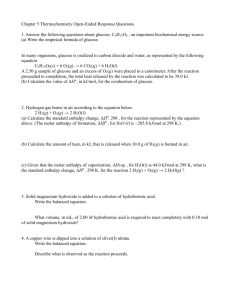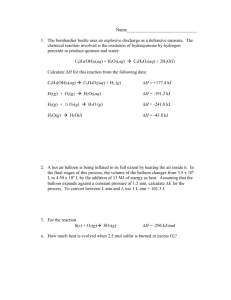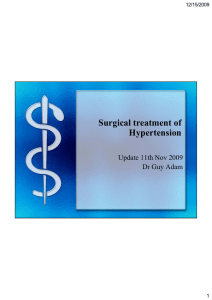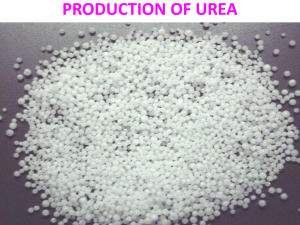iDI Now! – current topic that is news based Connect –
advertisement
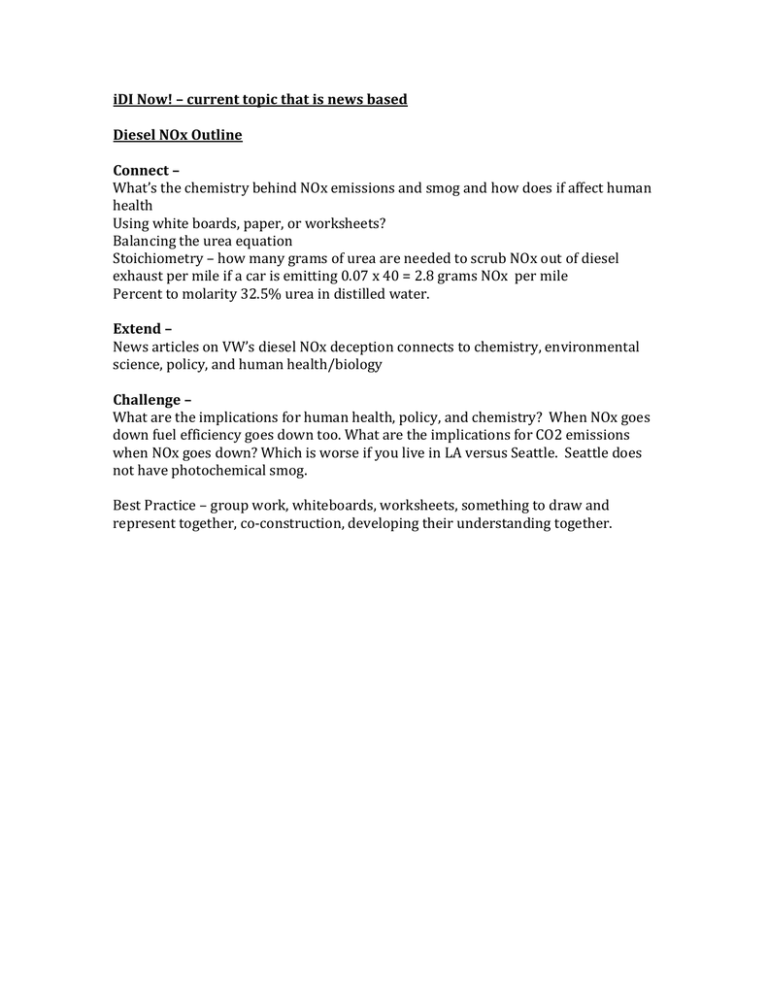
iDI Now! – current topic that is news based Diesel NOx Outline Connect – What’s the chemistry behind NOx emissions and smog and how does if affect human health Using white boards, paper, or worksheets? Balancing the urea equation Stoichiometry – how many grams of urea are needed to scrub NOx out of diesel exhaust per mile if a car is emitting 0.07 x 40 = 2.8 grams NOx per mile Percent to molarity 32.5% urea in distilled water. Extend – News articles on VW’s diesel NOx deception connects to chemistry, environmental science, policy, and human health/biology Challenge – What are the implications for human health, policy, and chemistry? When NOx goes down fuel efficiency goes down too. What are the implications for CO2 emissions when NOx goes down? Which is worse if you live in LA versus Seattle. Seattle does not have photochemical smog. Best Practice – group work, whiteboards, worksheets, something to draw and represent together, co-construction, developing their understanding together. Interdisciplinary Investigation iDI Now! VW Diesel-gate NOx Background 1. What’s in the news about Volkswagen diesel engines and NOx? Video? 2. What is NOx an how is NO formed? There’s no nitrogen in the fuel so where is it coming from? Have students brainstorm together and come up with where the NO is coming from. N2 + O2 2NO 3. Why are NOx emissions a problem? NO continues to react on sunny days with oxygen to form NO2, which is a brown gas and a part of photochemical smog. NO + O2 + sunlight NO2 + O The Oxygen atom that broke off is also reactive and forms ozone O3, another component of smog. O + O2 O3 4. What’s wrong with smog? What kinds of health and other issues have you heard of from smog? Aggravates asthma, cardiovascular disease, eyes tear up, visibility, damages rubber (tires, hoses). 5. How is NOx ‘scrubbed’ from the auto exhaust? A 32.5% mass per volume, urea solution is used to react with the NO in the exhaust. Chemistry Review Balancing and labeling species in chemical equations 1. Balance the reaction of NOx with Urea: 2 NO + 1NH2CONH2 + ½ O2 1 CO2 + 2 H2O + 2 N2 4 NO + 2NH2CONH2 + 1 O2 2 CO2 + 4 H2O + 4 N2 2. Label the species in your balanced equation as compounds, molecules, ionic compounds, and/or elements. Which of these is missing from the reaction? Molecules, Compounds (NO ionic compounds): NO, NH2CONH2, CO2, H2O Elements (diatomic molecules in elemental form): O2, N2 Molar Mass 3. What is the molar mass of Urea (NH2CONH2)? 60.06 g/mol Molarity and Unit Conversions 4. What is the molarity of the urea solution if it is 32.5% by mass urea and the density of the solution is 1.09 g/mL? Remember! Molarity = moles solute / Liters solution Moles of urea = 32.5g x 1mol urea = 0.5411255 mol urea = 0.541 mol urea 60.06g L solution = 100 g solution x 1 mL = 91.74mL solution x 1L . = 0.09174 1.09g 1000mL 0.541125 mol urea = 5.898M = 5.90M (3 significant figures) 0.09174 L solution Stoichiometry and Solution stoichiometry 5. Calculations: a. How many moles of urea are needed for each mile driven if 0.280 grams NO are produced each mile? 0.280 g NO x 1 mol NO/ 30.0gNO x 1 mol urea/2 mol NO = 0.0047 mol Urea b. How many grams of urea are needed for each mile driven? 0.004667 mol Urea x 60.06 g urea/ 1 mol urea = 0.280 g urea c. A typical car is driven 12,000 miles per year. How many moles of urea are needed per year? 0.004667 mol urea / mile x 12,000 miles = 56.0 moles urea d. How many liters of the Ad Blue urea solution (32.5% by mass) are needed each year? How many gallons of Ad Blue is this? 56.0 mol urea x 1 L urea solution / 5.9 mol urea = 9.49 L Ad Blue urea solution 9.49L x 0.264172 gallons / L = 2.51 gallons per year Discussion 6. Look at your balanced equation again. Notice what the products are? Also note that reductions in NO are often accompanied by reductions in gas mileage. a. What are the implications of using Ad Blue on air quality and human health on a local level versus climate change? b. Discuss whether Ad Blue should be required in areas that do not have air quality (NOx) issues such as Seattle, Portland, Vancouver BC, versus areas with photochemical smog issues such as LA, Phoenix, Mexico City, Beijing, Delhi, etc. c. Other comments, suggestions, thoughts on the ethics, policy, health, etc…?

